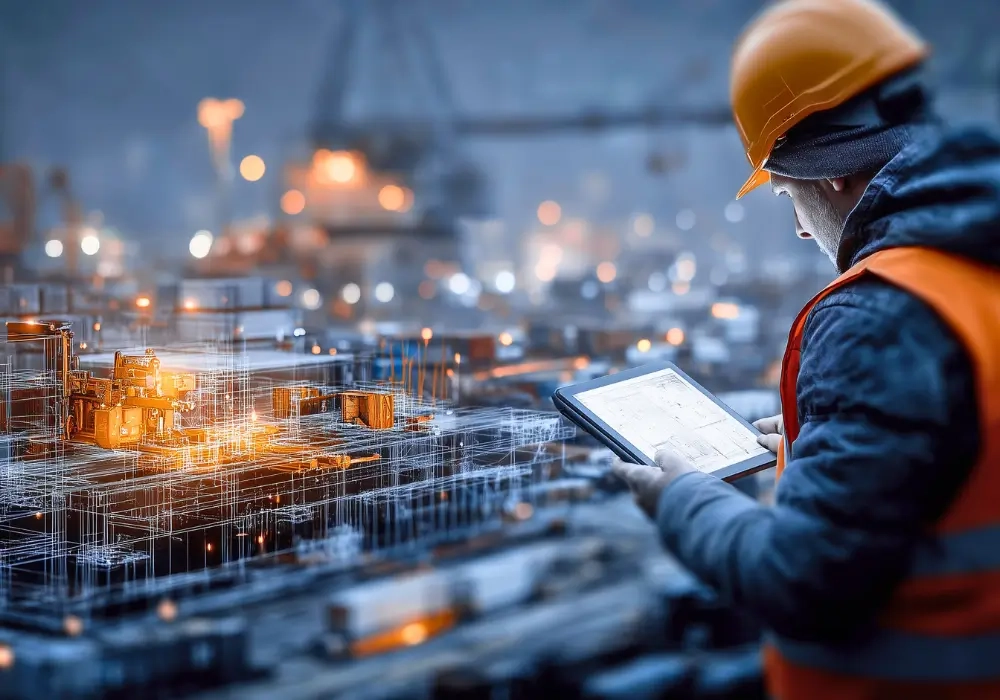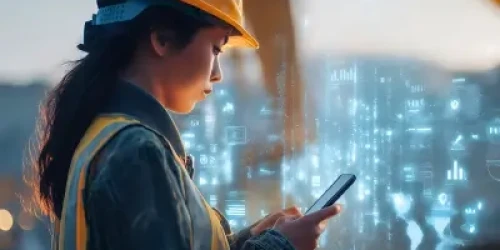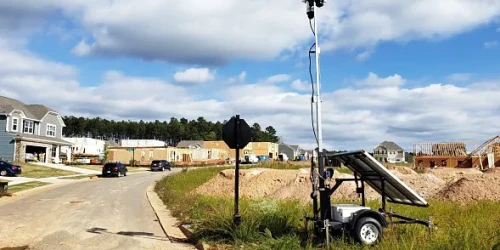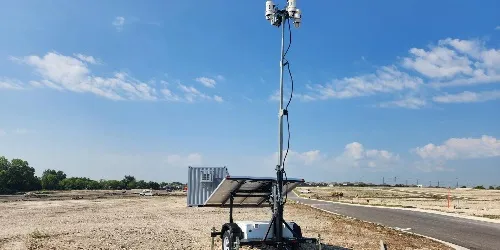Construction jobsites need surveillance to deter theft, manage safety, and keep projects on track. At the same time, strict state privacy laws, particularly California’s CPRA, require careful handling of the data these systems collect and share. A single mistake could lead to a costly audit or hefty fines, or even worse, damaging publicity that no company wants to face.
What’s changed in recent years is the role of security technology itself. Surveillance trailers and mobile monitoring tools are now designed with privacy controls at their core. Encryption, automated audit trails and strict access management are built in from the start, not bolted on afterwards.
This article takes a practical look at what that shift means for construction IT leaders. We explain how smart security systems balance strong protection with privacy compliance, giving you the tools to secure your sites confidently while meeting legal requirements.
Data Privacy Challenges US Construction Jobsites Face
In construction jobsites, data flows from surveillance trailers, mobile cameras, biometric scanners, GPS trackers and subcontractor systems, all of which create sensitive records that fall under privacy law. For an IT manager, keeping that data protected (while still making it useful) is a constant balancing act.
A complex web of regulations
Companies working across multiple states quickly discover that privacy rules don’t line up: what’s required in Texas may look different from what’s required in California. Add federal obligations like NDAA compliance, and the ruleset becomes a maze. IT managers must stay aware of these varying requirements, including state-specific laws like the CPRA, without getting lost in the details.
Unique jobsite conditions
Unlike an office, a construction project is temporary by nature. Teams change constantly, subcontractors come and go, with access permissions shift every week.
Surveillance footage captures faces, license plates, and even biometric identifiers, all of which qualify as personal data. GPS trackers record the exact movements of people and equipment.
Each of those data points can become a liability if handled without clear policies, consent, and retention limits.
Third-party access and worker rights
Contractors often need visibility into site data, but without binding privacy agreements, that access can create dangerous gaps. Workers also have to be informed when and why their data is collected. To stay compliant, companies must prove that:
- Data collection serves a specific purpose.
- Retention policies are defined.
- Every access is logged automatically.
What’s at stake?
A lapse in privacy controls can quickly escalate into regulatory fines or operational chaos. The risks include fines, legal disputes, and reputational damage that takes years to undo. Workers are also increasingly aware of their rights, meaning IT leaders must be ready to demonstrate exactly how personal data is being secured, why it’s being collected, and how long it will be kept.
Older security systems often ignored privacy, but today’s platforms embed it into their design. Encryption and access logs are standard, while retention settings and audit trails align with regulations. For jobsites, this shift is the difference between a system that creates compliance problems and one that solves them.
3 Ways Smart Security Systems Protect Data
A smart security system can manage the flow of sensitive information, building privacy into every step. Depending on the manufacturer and platform, some systems offer features like encryption, automated audit trails, and real-time access logging. Here’s how these platforms can make a difference:
1. Multi-layered data protection
- Encrypted transmission: Smart security platforms implement AES256 encryption for all video footage and sensor data, both during transmission and storage. This means that even if data is intercepted, it remains completely unreadable to unauthorized parties.
- Secure cloud infrastructure: Role-based access controls ensure that only authorized personnel can view specific types of information. Multi-factor authentication prevents unauthorized system access even if passwords are compromised. Secure 4G/5G networks transmit data through end-to-end encrypted channels that require no additional configuration from your IT team.
- Biometric security: Access logs link to surveillance footage, creating an audit trail that shows who entered which areas and when.
2. Automated compliance features
- Data minimization: Smart systems automatically filter footage, storing only what’s relevant to actual security events. This reduces data volume while keeping full compliance with privacy laws.
- Access logging: Every access to the system is logged in real-time, timestamped, and linked to user credentials. Audit trails are generated automatically, giving IT managers instant documentation for regulators or internal reviews. These automated features take the pressure off teams, allowing compliance without constant manual intervention.
3. Privacy controls
Privacy controls are built into the platform, not added afterward:
- Remote monitoring: Remote hubs continuously track who accesses data and trigger alerts for any unauthorized activity. Secure-by-design architecture means privacy protection is built into every system component rather than added as an afterthought.
- Secure by design: Single sign-on provides IT managers with centralized control through clear dashboards that display system status, compliance metrics, and automated reports. All components use US government-approved infrastructure with NDAA-compliant hardware that meets the strictest security standards.
With these tools, IT managers can enforce policies in real-time, respond to incidents immediately, and demonstrate compliance at a moment’s notice.
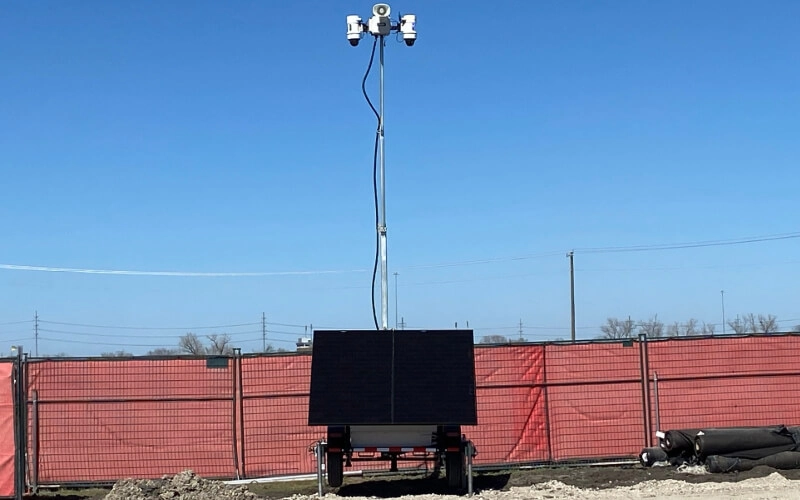
Stellifii’s Privacy-First Construction Security Platform
For IT managers dealing with multiple jobsites and compliance obligations, Stellifii consolidates privacy and security into one platform for convenience. It’s designed to handle the complexities of US construction jobsites while keeping data protection front and center.
Integrated privacy compliance
Stellifii consolidates privacy management across surveillance, environmental monitoring, and smart detection into a unified platform with comprehensive regulatory adherence. Instead of managing separate privacy policies for different security vendors, IT managers gain centralized control over all data collection activities through a single interface.
Compliance tools
The platform supports state laws like CPRA, CCPA, and TDPSA. Federal standards aren’t overlooked either, as Stellifii uses NDAA-compliant hardware that meets government contract privacy requirements.
In short, it's a single interface for video surveillance, environmental monitoring, system diagnostics, and compliance reporting all in one.
Advanced implementation features
Smart cameras with AI-video analytics filter relevant footage, reducing unnecessary data while maintaining security coverage. When security breaches occur, real-time alerts notify teams instantly, so they can immediately respond to potential threats.
Remote monitoring hubs work alongside these systems to provide continuous oversight, automatically enforcing privacy controls and responding to unauthorised access attempts before they can escalate into serious security incidents.
Automated processes
Stellifii automates breach detection and regulatory notifications, compliance reporting for ESG, PPE, mobile surveillance, environmental monitoring and state laws.
Heartbeat software tracks system performance and diagnostics, so managers can focus on strategy rather than manual monitoring.
Executive dashboards
Dashboards show real-time privacy compliance status with audit-ready documentation. Searchable timelines and automated reports make it easy to demonstrate ROI, track risk reduction, and provide transparency to stakeholders.
Vendor consolidation
Stellifii eliminates liability gaps that often occur when multiple vendors with varying privacy standards are involved. IT teams can manage fewer vendors, streamline reporting, and reduce complexity without sacrificing results.
Product integration
Each product connects to privacy benefits:
- Smart Detection Systems: Smoke and fire, PPE, intrusion detection, and LPR.
- Solar Surveillance Trailers: Mobile privacy compliance with encrypted data transmission.
- Environmental Monitoring: Non-invasive data collection with automated retention.
- Stellifii Platform: Centralized management with multi-state compliance tools.
This integrated approach helps IT managers maintain control while reducing risk and demonstrating compliance across every construction jobsite.
Take Control of Your Construction Data Privacy Today
Managing data privacy across US construction jobsites doesn’t have to be complicated. Our modern surveillance products, when powered by Stellifii, give IT managers the tools to address legal requirements and protect sensitive information.
By consolidating surveillance, environmental monitoring, and smart detection in a single platform, your team can simplify audits, maintain clear records, protect sensitive data, and keep projects on track.
Contact WCCTV today and we’ll help you build security and compliance into every jobsite.
How can construction jobsite security help prevent theft and vandalism?
Strong construction jobsite security combines access control systems, security guards and surveillance cameras to deter theft and vandalism. Real-time monitoring and automated alerts allow teams to detect suspicious activity early and respond quickly, reducing losses and keeping site safety a priority.
What role do smart detection systems play in site security?
Smart detection systems add a proactive layer of protection on construction sites. They can identify smoke, fire, PPE non-compliance, intrusions, and even track vehicle access with LPR. Each alert is tied to site data, creating clear, auditable records that help reduce blind spots and improve overall safety.
Why are security cameras and real-time monitoring important for construction jobsites?
Surveillance cameras provide continuous oversight of site conditions, while real-time monitoring delivers instant alerts about suspicious activity or site safety risks. Together, they enable faster response times, more comprehensive security coverage and protection against high-risk incidents like theft or unauthorized entry.
What security solutions are best for high-risk construction jobsites?
High-risk jobsites require layered security measures that combine physical security, security personnel and technology-driven tools. A comprehensive security strategy often includes surveillance cameras, access control systems and automated security monitoring. These solutions work together to reduce vulnerabilities and maintain compliance across the construction industry.
